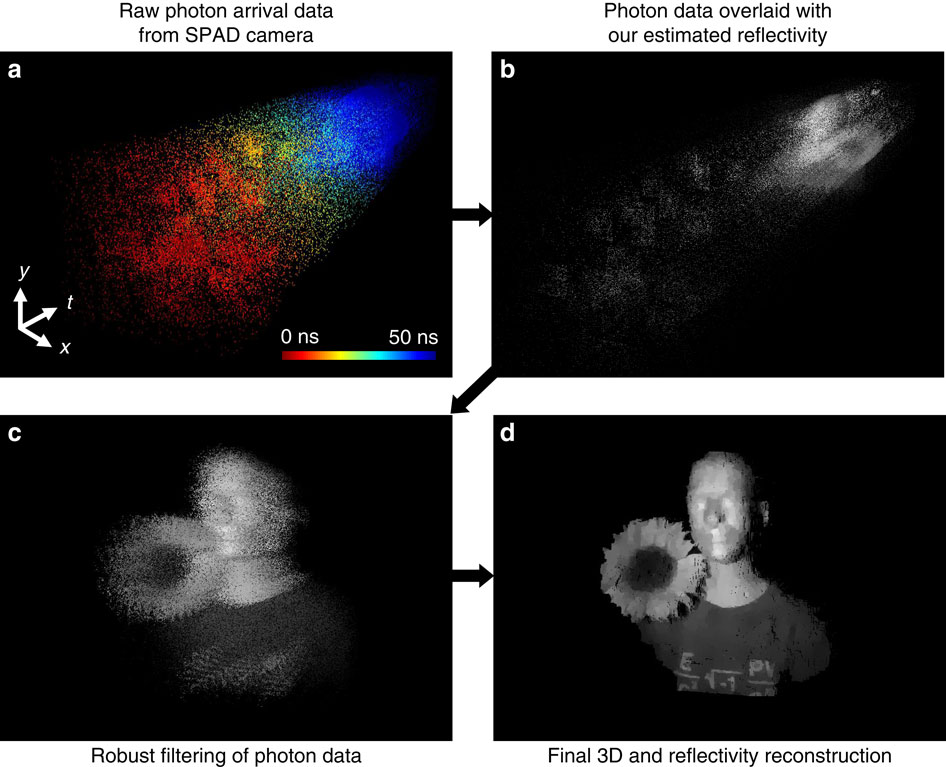
Reconstructing a scene’s 3D structure and reflectivity accurately with an active imaging system operating in
low-light-level conditions has wide-ranging applications, spanning biological imaging to remote sensing.
We propose and experimentally demonstrate a depth and reflectivity imaging system with a single-photon
camera that generates high-quality images from ~1 detected signal photon per pixel.
Previous achievements of similar photon efficiency have been with conventional raster-scanning data collection
using single-pixel photon counters capable of ~10-ps time tagging.
In contrast, our camera’s detector array requires highly parallelized
time-to-digital conversions with photon time-tagging accuracy limited to ~ns. Thus, we develop an array-specific
algorithm that converts coarsely time-binned photon detections to highly accurate scene depth and reflectivity by
exploiting both the transverse smoothness and longitudinal sparsity of natural scenes. By overcoming the coarse
time resolution of the array, our framework uniquely achieves high photon efficiency in a relatively short acquisition time.

For example, the figure above shows the step-by-step result our algorithm
applied to the mannequin and sunflower scene data, acquired using
the single-photon avalanche photodiode (SPAD) array detector.
The final 3D and reflectivity result output by our algorithm reveals fine structure
that was hidden in the sea of photons.

The animation above compares the results of conventional pixelwise processing with our method's. The conventional result degrades quickly as we approach low light levels, while our method is robust even down to ~1 signal photon per pixel.
Reproducible research
We make MATLAB code and data used in our publication available here.
Press and articles
Researchers generate 3D images using just one photon per pixel in Phys.org
Photon per pixel in Nature Photonics Research Highlights by David Pile
Author affiliations



Contact
Contact dshin@mit.edu for more information.